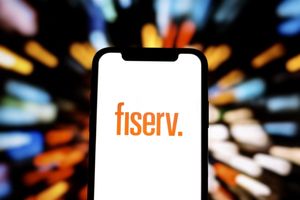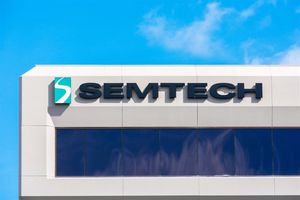Hagens Berman, Law Firm Behind Massive NCAA NIL Litigation, Says Talk of Executive Order and Saban’s Interfering are Unmerited
Law firm co-leading historic NIL litigation spotlights the best aspects of incoming changes amid Coach Saban’s “unneeded self-involvement”
Attorneys at Hagens Berman representing a class of hundreds of thousands of current and former college athletes in a pending historic $2.78 billion settlement with the NCAA — including a revenue sharing provision worth at least $20 billion — say talk of an executive order and eleventh-hour self-importance from University of Alabama’s ex-football coach, Nick Saban, is unmerited and unhelpful.
“While he was a coach, Saban initially opposed NIL payments to athletes, pushing to add restrictions and red-tape through national legislation to add ‘some sort of control.’ During his time scrutinizing the athlete pay structure, he made tens of millions of dollars and was previously the highest-paid coach in college football,” said firm managing partner and co-founder, Steve Berman, who serves as court-appointed co-lead counsel in the litigation, of the settlement slated to become one of the largest antitrust class-action settlements in history.
“Coach Saban and Trump’s eleventh-hour talks of executive orders and other meddling are just more unneeded self-involvement,” Berman said. “College athletes are spearheading historic changes and benefitting massively from NIL deals. They don’t need this unmerited interference from a coach only seeking to protect the system that made him tens of millions.”
The antitrust class-action lawsuit against the NCAA will bring historic changes to college sports and will allow college athletes to be fairly compensated for the use of their name, image and likeness (NIL) in what has become a multibillion-dollar industry. The firm’s attorneys have fought in the area of sports litigation for two decades.
How Have Changes to NIL Rights Benefitted NCAA Athletes Without Any Executive Order?
- Allowing payments to college athletes improves the overall fairness of college sports, from schools to coaches to players. College sports is a multibillion-dollar entertainment industry that generates over $19 billion per year. For decades, college sports have existed upon the mantle of athletes performing solely “for the love of the game” while coaches were often their state’s highest earning public employee on the payroll. For example, while University of Alabama’s ex-coach Saban touts his opinion on limiting athletes in this new landscape, he will receive a $500,000 salary in his new advisory role with the university, a hypocritical standpoint to say the least.
- NCAA athletes are empowered to earn their own income. The total value of new payments and benefits to college athletes is expected to exceed $20 billion over the next 10 years, and college athletes who were once left with no compensation for their hard work, entertainment value and tireless physical efforts are now given a fair place at the table in the realm of college sports. NIL payments inherently allow athletes to operate more independently and make choices based on the accurate value of their capabilities. Historically, college sports have included many Black and low-income athletes, who now stand to receive the full benefits of their value.
- NIL deals allow college athletes to explore a new realm of business, learning about business management and branding. NCAA athletes now have the opportunity to engage in a lucrative area of endorsements, product placements, social media deals and other business ventures, giving them a first-hand education in business management and sports business, a growing market with tangible value. College athletes may also hire professionals to assist in the areas of tax law, legal issues or marketing.
- NCAA sports is a hugely lucrative space, allowing college athletes massive rewards. Individual athletes have secured NIL deals in the millions and numerous college athletes have taken advantage of the opportunity to secure major deals. College athletes receive the ability to invest in themselves, their careers and their futures.
- Statistically, sports media outlets have reported that with the induction of NIL deals, more athletes seem to be opting to stay in school. Prior to NIL deals, a college athlete had few benefits to remaining in school, especially if faced with an injury. Taking their skills into professional athletics in the future is already a slim chance. With the inclusion of name, image and likeness payments, NCAA athletes have another benefit to staying the course and completing college, which will benefit them in myriad ways. Athletes are also incentivized to do well academically by this same mindset.
The settlement process is being thoroughly reviewed by Judge Claudia A. Wilken of the U.S. District Court for the Northern District of California who in the April settlement fairness hearing requested further attention to details concerning roster limits and other aspects of the settlement.
The preliminarily approved settlement resolves three pending antitrust lawsuits, House v. NCAA, Hubbard v. NCAA, and Carter v. NCAA. As part of the settlement, the NCAA and its conferences will pay more than $2.78 billion in damages to college athletes over a 10-year period, eliminate rules prohibiting schools from making direct payments to athletes, and dramatically expand the availability of compensation and benefits available to athletes. This includes eliminating restrictions on the number of available athletic scholarships across all Division I sports.
Class members in the three affected cases may find out more about the claim process by visiting the settlement website at collegeathletecompensation.com. Find out more about the class-action lawsuit against the NCAA and its member conferences.
About Hagens Berman
Hagens Berman is a global plaintiffs’ rights complex litigation law firm with a tenacious drive for achieving real results for those harmed by corporate negligence and fraud. Since its founding in 1993, the firm’s determination has earned it numerous national accolades, awards and titles of “Most Feared Plaintiff’s Firm,” MVPs and Trailblazers of class-action law. More about the law firm and its successes can be found at www.hbsslaw.com. Follow the firm for updates and news at @ClassActionLaw.
View source version on businesswire.com: https://www.businesswire.com/news/home/20250505781601/en/
“College athletes are spearheading historic changes and benefitting massively from NIL deals. They don’t need this unmerited interference from a coach only seeking to protect the system that made him [Nick Saban] tens of millions.”
Contacts
Media Contact
Ash Klann
pr@hbsslaw.com
206-268-9363
More News
View More




Recent Quotes
View More
Quotes delayed at least 20 minutes.
By accessing this page, you agree to the Privacy Policy and Terms Of Service.